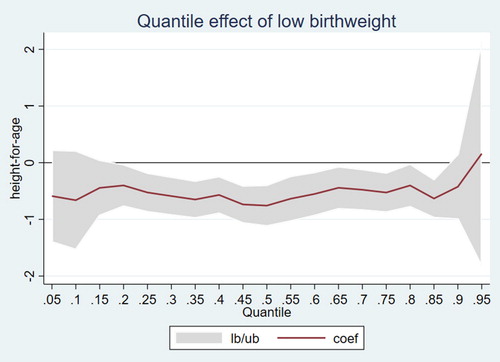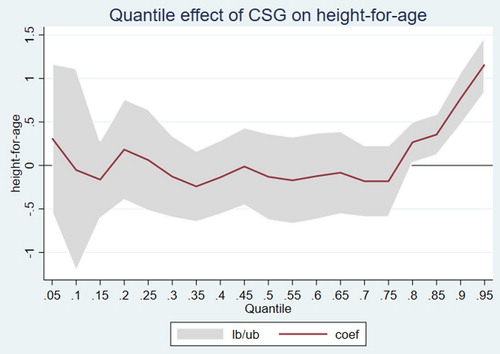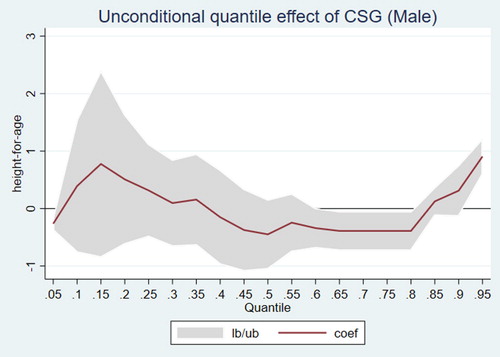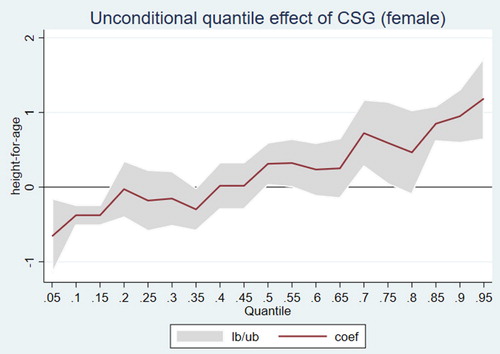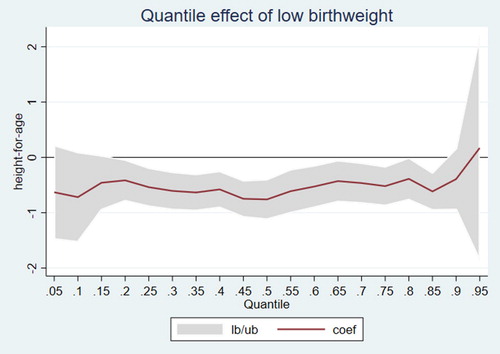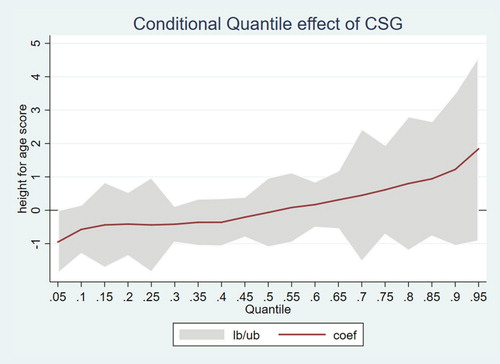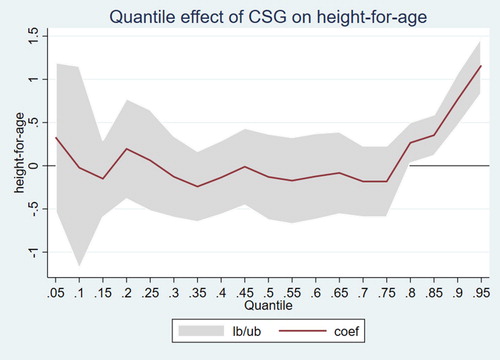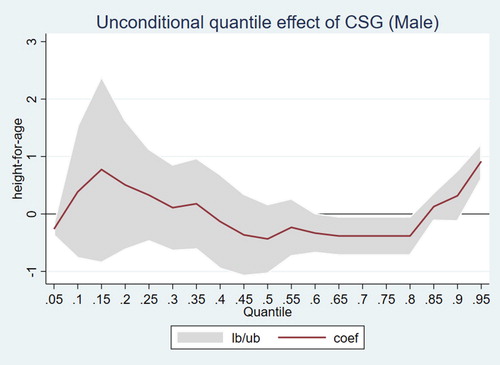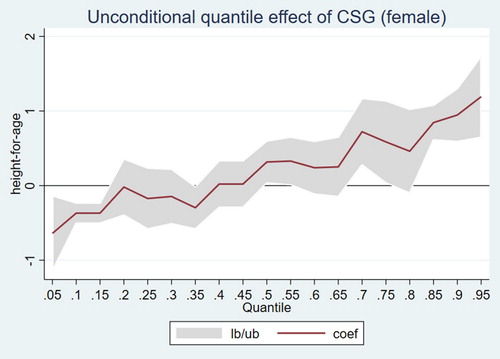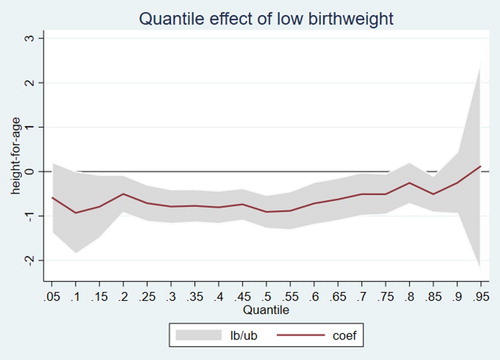Figures & data
Table 1. Summary statistics.
Table 2. Delay equation.
Table 3. First three moments after entropy balancing.
Table 4. Effect of CSG with and without low birthweight.
Table 5. Results disaggregated by gender.
Table 6. Effect of low birthweight.
Table A1. Summary statistics when low birthweight is the treatment variable.
Table A2. Effect of CSG with and without low birthweight when the estimation of motivation excludes the caregiver relationship.
Figure A2. Unconditional quantile effect of CSG when the estimation of motivation excludes the caregiver relationship.

Table A3. Results disaggregated by gender when the estimation of motivation excludes the caregiver relationship.
Figure A3. Unconditional quantile regression for boys when the estimation of motivation excludes the caregiver relationship.
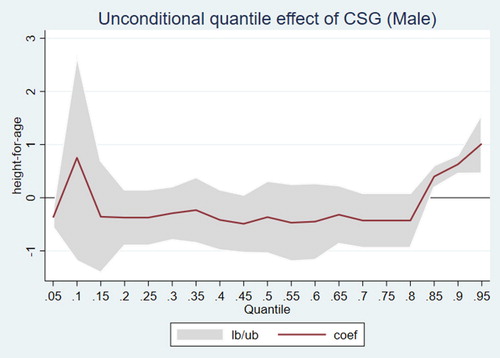
Figure A4. Unconditional quantile regression for girls when the estimation of motivation excludes the caregiver relationship.
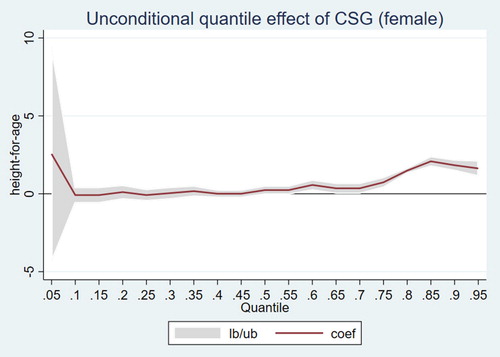
Table A4. Effect of low birthweight when the estimation of motivation excludes the caregiver relationship.
Figure A5. Quantile effect of low birthweight when the estimation of motivation excludes the caregiver relationship
